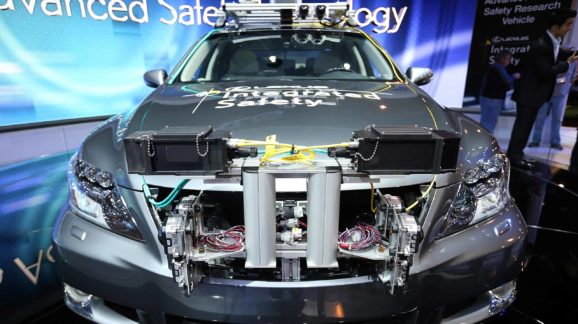Human Achievement of the Day: Don’t Buy the Hyperloop, Bet on Self-Driving Cars

Futuristic transportation technology often captures the imaginations of the press and public. Sometimes, it’s hype-driven nonsense: think the mysterious “IT” that became the mockery-inducing Segway or Elon Musk’s more recent vomit-inducing death-tube proposal appropriately named the Hyperloop, which has managed to hoodwink the dumber segments of the tech press as well as the government of Slovakia.
Beyond the problems presented by the laws of physics and human physiology, the economics of the Hyperloop make no sense given the meager time-savings benefits over the far cheaper and much more flexible alternative of air travel—not to mention that the proposed Hyperloop would travel only about half as fast as the decommissioned 1960s-era Concorde supersonic passenger jet. Personally, I’d bet on seeing currently infeasible suborbital passenger shuttles before a wasteful, fixed-infrastructure-dependent Hyperloop.
But sometimes, groundbreaking transportation technologies actually hold promise. One of the most promising is the self-driving car, which may be even more transformative than the mass-produced automobile was a century ago and the modern expressway was in the 1950s. Google was first out of the gate with their prototype, but all major automakers and Tier 1 auto part suppliers are currently working on their own autonomous systems.
Self-driving cars have the potential to provide all the private benefits of automobility—personal, efficient, flexible transportation—and then some. Human error is a factor in approximately 93 percent of crashes, so computer-controlled driving offers large potential safety benefits. In addition, making the daily commute on congested highways can be stressful, but that commute becomes much less stressful when one can read a book, watch videos, converse with other passengers, sleep, or do work while the computer handles the driving.
And, perhaps most excitingly, fully automated vehicles can act as robotaxis, allowing urban residents to potentially forgo the costs of auto ownership and granting unprecedented personal mobility to the disabled, elderly, and youth who presently must rely upon slow, inflexible mass transit or even slower, costly paratransit dial-a-ride vans. Regulators should be particularly conscientious of the promise this technology offers these mobility-impoverished groups, as I noted in a 2012 Washington Post op-ed. Below is a 2012 video from Google demonstrating an earlier self-driving car prototype with Steve Mahan, who is 95 percent blind and unable to drive:
This new technology promises to transform not only the way we live, but where we live. As the Cato Institute’s Randal O’Toole pointed out recently in The Washington Post and I noted in CEI’s 2014 report on road vehicle automation, urban residents may be able to more easily go without owning a car, but consumers may also choose to move further from their jobs, as the travel-time costs associated with auto travel fall if drivers are freed from time-on-task responsibility. This is to say, self-driving cars may “pull” people to dense urban cores and “push” them to more distant, cheaper land on the urban periphery. Taken together, it remains to be seen which force will be stronger, and that will have very real political implications for green social engineers who fret about the mythical dangers of “urban sprawl.”
In addition, the federal government and large automakers are attempting to lock-in an inferior, non-automated connected vehicle technology, which could delay the introduction of far superior automated vehicles. It is worth noting that there are many technical hurdles facing self-driving cars before a projected rollout in the next 15 years, but regulatory threats loom at least as large, if not larger.
That said, there is reason to be optimistic about the future of self-driving cars, unlike media- and hype-fueled nonsense like the Hyperloop. For once, it appears a transformative futuristic transportation technology is on the cusp of becoming reality.